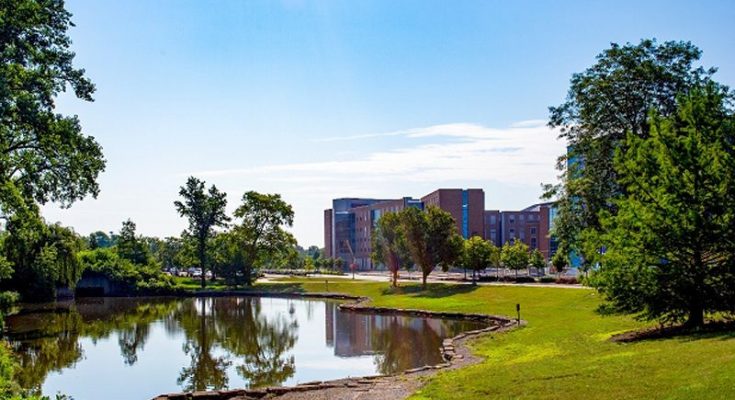MUNCIE, Indiana – Thousands of college students may have picked up COVID-19 while at popular and densely-packed Spring break destinations earlier this year only to return to infect others with the coronavirus, says a Ball State University researcher.
“College Student Contribution to Local COVID-19 Spread: Evidence from University Spring Break Timing” provides the first empirical evidence of causal, nationwide effects of spread of COVID-19 by Spring breakers, said Ball State University Economics Professor Paul Niekamp.
“We find that the increase in case growth rates peaked two weeks after students returned to campus,” said Niekamp.
“Consistent with secondary spread to more vulnerable populations, we find an increase in mortality growth rates that peaked four to five weeks after students returned.”
Niekamp conducted the study with Daniel Mangrum, a Ph.D. candidate in the Department of Economics at Vanderbilt University. Their study examined the effects of increased travel by college students on COVID-19 case and mortality growth rates in the United States.
Since universities designed their academic calendars, and therefore Spring break dates, years in advance of the pandemic, the researchers were able to collect data on 7.5 million students from 1,326 four-year colleges and universities across the nation.
Niekamp and Mangrum used SafeGraph Social Distancing Metrics to track the mobility of college students. This dataset uses GPS pings derived from smartphone location data.
The study found:
- Counties with more early Spring break students had higher confirmed case growth rates than counties with fewer of those students.
- The increase in case growth rates peaked two weeks after students returned to campus.
- Consistent with secondary spread to more vulnerable populations, there was increase in mortality growth rates that peaked four to five weeks after students returned.
- Students who traveled through airports, to New York City, and to popular Florida destinations contributed more to the spread of COVID-19 than the average student.
- There was no significant evidence of students traveling via cruise liners contributing to local infection spread.
Niekamp also noted that due to university closures and non-pharmaceutical interventions in response to the pandemic, students at universities with early Spring breaks left campus for scheduled travel and returned to campus afterward.
The researcher found that counties with universities with early breaks faced large inflows of potentially infected returning students before the suspension of in-person classes while areas with universities with later spring breaks did not face this influx.
Niekamp said the study’s results suggest university student travel contributes to local COVID-19 spread and universities should consider the extent to which their policies can mitigate risk to the surrounding community.
“As of this time, universities across the United States are deciding how to conduct in-person classes for the Fall 2020 semester. Some institutions have changed their academic calendars to eliminate breaks when students typically travel and to conclude in-person classes before Thanksgiving.”
Beyond mitigating risk for the university community, universities have the opportunity to make decisions that impact surrounding communities.
“Our results suggest that reducing long-distance student travel can reduce COVID-19 spread both within the university and for higher-risk individuals in the surrounding county,” Niekamp said.

